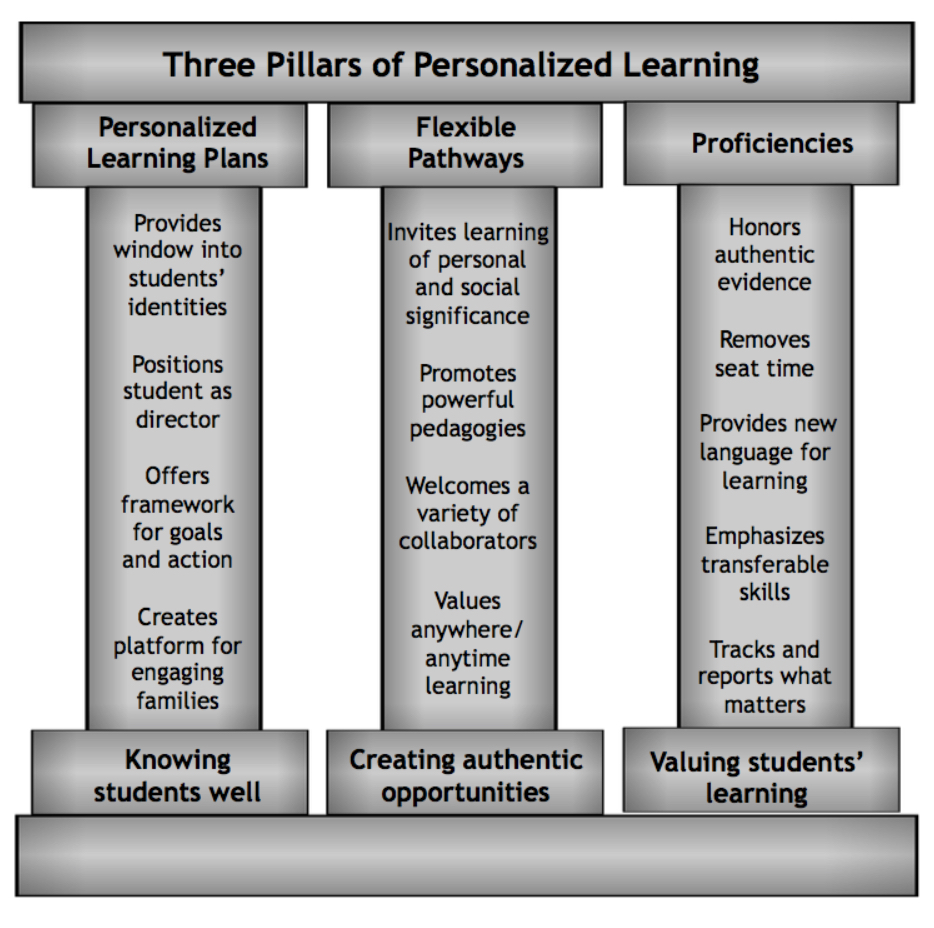Remember that first pillar?
You know, the one that had PLPs at the top and knowing students at its foundation? Right! It emphasized providing a window into students’ identities.

Students need to feel safe at school, to know that they can truly be themselves, and that they’ll be seen, heard, accepted, and encouraged for who they are. So, how do we make that happen?
The PLP provides a fabulous place for students to feature their identity projects and own creations. These are essential pieces of a PLP and are key to knowing students well. Because when we know students well, we recognize their whole selves, and create space for them to speak about their whole selves and identities. And this is a crucial component of protecting and uplifting students whose identities have been marginalized.
After engaging in deeply meaningful and well-scaffolded identity work, a trio of students at Frederick H. Tuttle Middle School, in South Burlington VT, attended a state conference for educators at which they taught the educators how to know students well. They unpacked the idea of social identities by beginning with their own, and creating a space at the conference for educators to explore and define their own identities. Think about the bravery that took. Think about the deep learning on display when our students put themselves out on a limb for us, and create better, evolving spaces for all members of our school community.
Food for thought
Read about how other educators are grounding PLPs in student identity, helping their students feel seen, heard, safe, and valued:
- Equity, Identity and Art
- Scaffolding Deeper Identity with Students
- Use Thinglink to Explore Identity
Now tell us
We’d love to hear from folks. What are you doing to support student growth? Share your ideas and maybe an example or two of a student project in a Flipgrid. See what others are doing to gain inspiration.
- How do you help students be seen, heard, and respected for who they are right now?
- In what ways do your students showcase their current and future identities with each other?
Let’s go
Next, we’ll help you avoid the pitfalls some educators have faced when implementing PLPs.

